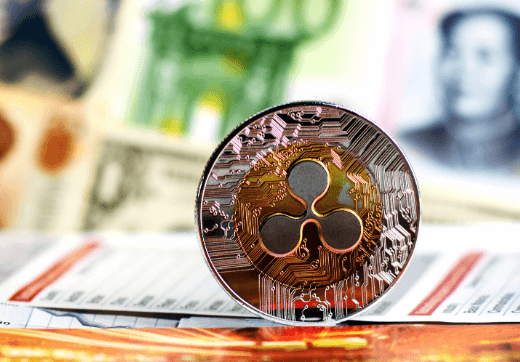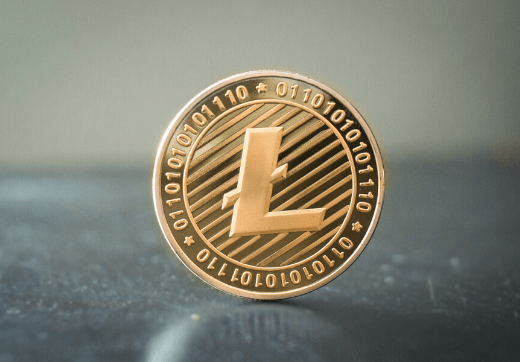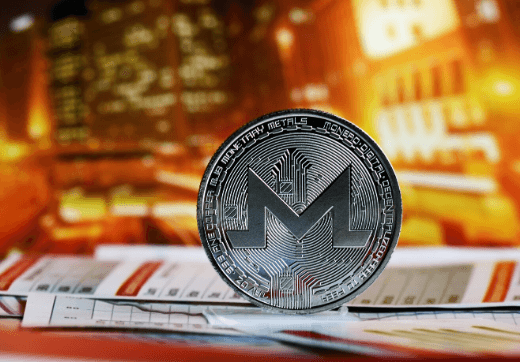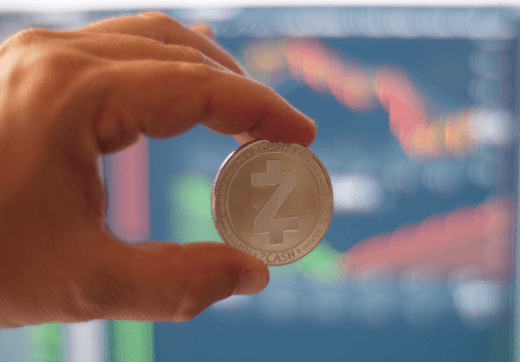Some say cryptocurrency could be the way of the future; others say that investing in these crypto assets is just a waste of money.
But what are cryptocurrencies, and how do they work? And what types of crypto coins and is cryptocurrency the future of money?
What are Cryptocurrencies?
Cryptocurrencies could be described as digital assets that present new opportunities for investors and online payment. While these digital assets can be used to buy online goods and services, they are mostly used for trading them to make a profit. The virtual currency is secured by cryptography, which describes the encryption techniques that are applied to secure networks.
A big advantage of cryptocurrencies is that there is no government or bank behind them, which makes it hard for governments to interfere or manipulate crypto assets.
The value of cryptocurrencies is similar to gold or oil; it depends partly on the supply and demand of the market. Unlike gold, crypto is virtual, so it’s the value of the software that goes up and down.
Both gold crypto coins are classed as a store-value-asset. While gold is usually bought so something else can be made from it, crypto-assets can also be used for several different purposes.
Some people buy crypto coins like bitcoin without wanting to trade them rather than have them and let the value appreciate over time.
Cryptocurrencies succeed because they are both useful and work as a store of value.
How do cryptocurrencies work?
All crypto assets are supported by blockchain technology. It is basically a massive digital database that records how much of a particular cryptocurrency someone owns.
These databases are decentralized; it means that they are constantly and entirely updated and operated by millions of people who run the relevant software on their computers.
The databases and software can be accessed public and on any computer that is connected to the internet.
It is cryptographic, which means all data is encrypted with computer-generated code.
The big advantage is that it is impossible to delete anything from the blockchain database because it is continuously synced and recorded in the worldwide networks of personal computers and servers.
Each crypto coin is recorded and added to the blockchain database, and this addition forms a new “block.” The network of computers that record the transactions are called miners, and the one who adds the new block gets paid in the cryptocurrency. It makes miners compete with each other trying to record the transaction faster.
To delete anything from the blockchain, it requires the approval of every computer that runs the blockchain software. Because this software is often public, it makes it harder to get away with underhand dealings.
Since every synced blockchain database verifies every transaction, it is almost impossible for a single person or well-organized group to cover up any foul play.
Even when someone succeeded in transferring a bunch of coins to his accounts, the blockchain databases would soon fail to sync up, and the criminal act would be spotted.
The different types of Crypto coins
The market of cryptocurrencies is growing and has many opportunities to choose from.
Bitcoin (BTC)
It all started with the most famous crypto Bitcoin which was introduced in the 2008 financial crisis to present an alternative to the financial system. An inventor named Satoshi Nakamoto is the man or group behind bitcoin and blockchain technology.
Bitcoin was intended to be decentral so no single entity can control it. The coin is based on functions that rely on mathematical proof.
Many people were frustrated with the financial system failing in 2008; this is where bitcoin made them enthusiastic about possible solutions. It helped bitcoin gain traction over the last decades and made it the most valuable currency.
Ethereum (ETH)
One of the first bitcoin alternatives is ethereum, which launched in 2015. It is a decentralized software platform that uses smart contacts (agreement between buyer and seller directly written into the software code) and decentralized applications (DApps that are in a network and not on a single computer). Both are built and run without downtime, fraud, control, or interfering from third parties.
The application runs on its platform cryptographic token “ether,” which is like a vehicle that is moving around on the ethereum platform. Most developers are looking to code and run applications inside ethereum. And investors use ether to purchase other digital currencies.
Ripple (XRP)
Ripple was released in 2012 and acted both as a cryptocurrency and as a digital payment network for financial transactions. It is a network that creates fast, secure, and low-cost ways to transfer money. Ripple allows that any type of currency can be exchanged from the USD and Bitcoin to gold and EUR and directly connects to banks
The primary focus is not a person-to-person transaction but to move sums of money on a larger scale.
It doesn´t require mining because all of the Ripples XRP tokens are pre-mined before launch. So there is no creation of Ripple tokens, only the introduction, and removal from the market supply.
This structure makes Ripple more unique indifference to other crypto coins because without the need to mine it reduces the usage of computing power, and it minimizes the network latency.
Litecoin (LTC)
Litecoin was created by Charlie Lee, an MIT graduate, and former Google engineer. It is based on a global open-source payment network, which is like other cryptocurrencies not controlled by any central authorities. Litecoin is similar to bitcoin in many ways, but it uses “scrypt” as a secure algorithm instead of bitcoins “SHA-256.”
This gives litecoin a faster block generation rate to offer a faster transaction time.
Tether (USDT)
Launched in 2014, Tether was one of the first so-called stable coins that are cryptocurrencies that use the market value of other currencies or external reference points to reduce the instability of the market.
Cryptocurrencies like bitcoin have major ups and downs in value; for example, 1 Bitcoins was worth $2000, and months later, it changed to $10000, and now it is around $8000. Tether is more stable and doesn´t have such drastic value changes, which makes it more attractive for the user who doesn´t want to take a big risk.
Monero (XMR)
A secure, private, and untraceable currency is monero, which dates back to April 2014. The developments of this platform were completely founded with donations and community-driven.
The focus of Monero is on decentralization and scalability and enabling complete privacy by using the special technique “ring signatures.” This technique has a group of cryptographic signatures that includes at least one real participant. Because these signatures all appear valid, the real ones cannot be isolated.
The ring signature made monero fairly popular for criminal operations around the world because of the privacy and that it cannot be traced back.
Zcash (ZEC)
Zcash is built on the original Bitcoin code by MIT scientist John Hopkins and his team. It was also created on the decentralized blockchain.
One of the core features is privacy where users can send and receive Zcash without disclosing the sender and receiver, or the amount that was transacted.
While there are over 2000, cryptocurrencies are a selection of some of the most popular ones that are on the market.
How to Invest in Cryptocurrencies?
While investing in the stock market is scary for many people, cryptocurrencies also have risks behind them as many crypto coins have big ups and downs in value. Nevertheless, it is a good choice for investment because blockchain technology can completely transform the financial world, especially now in the Corona crisis.
No matter what cryptocurrency you consider to invest, you need to know how to exchange your money into crypto coins safely. New investors need a digital wallet, personal identification, a secure internet connection, and an account on a cryptocurrency exchange platform.
1. Get a wallet
To start, you need a wallet. Most cryptocurrencies like bitcoin have a wallet where you can store your coins. Some may need an account but make sure if you make a wallet that it is an official site or has enough credibility and has good reviews on sites like trust pilot, for example.
There are two types of wallets:
- Software wallets are applications that are connected to your normal bank account. These wallets are quick and easy to access, but you put your money in the hands of a third-party company. While the leading software wallets are trustworthy, some popular companies have collapsed or been hacked in the past. So larger Crypto holdings should be stored securely.
- Hardware wallets are more old-school but generally more secure because they are kept offline. These wallets let a user’s private key be stored on a physical hardware device that is similar to a flash drive. It prevents hackers from getting the private key, which is needed to access your wallet through an internet connection. One of the leading hardware wallet manufacturers is Trezor where you can order the device and store all your cryptocurrencies wallets.
2. Connect a bank account
To purchase any cryptocurrency, you need to connect your wallet to a bank account, credit, or debit card. While these payment methods are the same for exchanging traditional currency for coins, they all have different fees.
Bank account transactions can take up to four or five days to process; also, depending on your bank, you may have spending limits. With credit or debit cards, you can buy cryptocurrencies almost instantly.
3. Select a Crypto exchange platform
Exchange platforms are online marketplaces where you can exchange crypto for a traditional currency like Bitcoin for US Dollar. You can find a lot of different options like for example Coinbase. But make sure to use only trustworthy exchange platforms with a good reputation, reliability, and security and not too high processing fees or exchange rates.
While most offer wallets for their users, they are not really secure because wallets are not the main concern of exchange platforms
Cryptocurrency investing Infographic:
Is Cryptocurrency the future of money?
Over the last five years, the average growth rate of bitcoin users and transactions is nearly 60% per year. It shows that Cryptocurrencies are getting more popular for both private and public investors.
When crypto continues to gain momentum, its long-term growth will most likely happen. Important are the foundations that set future advantages in finance.
- Privacy is one of the biggest factors where users get protected with anonymized transactions through cryptographic techniques
- Accessible to millions of unbanked individuals around the world.
- Efficiency and reduction of transactions could save consumers billions of dollars annually.
- Security transactional networks provide unchangeable, traceable records
- Programmable money and smart contacts could drastically eliminate administrative and manual work.
According to the “Imagine 2030” report of Deutsche Bank, the current money system is fragile. The report sees that by 2030 cryptocurrencies will have over 200 million users. The Deutsche Bank suggests that digital currency might eventually replace cash one day as demand for anonymity and more decentralized means of payment grow.
In the report, the bank states that cryptocurrencies are currently just an addition to the current money payment system. But in the next decade, it could be replaced. Deutsche Bank predicts that the number of crypto users will grow 4x in the next ten years. It is a similar growth of the Internet in its first 20 years.
The breakout years of simplified cryptocurrencies and huge user growth are not far away. The talent and capital are here, and conditions like economic inclusion and freedom are ideal.
But that all this can happen, there is one big uncertainty about how governments approach cryptocurrencies. If the predictions of Deutsche Bank will come true, there need to be knowledgeable policymakers that legitimize cryptocurrencies. The report says that crypto must become legitimate in the eyes of regulators and governments.
While crypto regulations are happening right now, there are many hurdles before crypto coins might become legitimate substitutes for fiat currencies. The government will not sit around and lose control of the money supply without a victorious fight.
However, the real victim of crypto may not be fiat but plastic cards. For decades we have slowly phased out cash. We moved from paper money and coins to online transactions and debit/credit cars. The rise of mobile payments like Apple Pay, Paypal, or Google pay replace plastic cards.
Blockchain has many advantages over plastic cards, but the basic difference is that all payments and transfers are made with the user’s full consent. Deutsche Bank believes that plastic cards may die because crypto adoptions increases. We simply won’t need them anymore.
Cryptocurrency has become more popular than you might think. But they can be both good and evil like everything in life. The problem is that many don’t understand the real value of such coins because they only focus on speculative trading driven by price and volatility.
Crypto has a unique solution that makes fiat currencies outdated. Cryptocurrencies empower people to be their own bank and payment method. There are still regulatory and technical challenges before crypto replaces cash in user adaption. But only when they are fully booted and integrated into our lives, can cryptocurrencies change the world we only begin to understand.
Cryptocurrencies with decentralized networks and autonomous systems can change the financial world, especially in the upcoming financial crisis forever. When crypto transforms finances, it unlocks countless investment opportunities across the global economy.
So it is a good idea to do your research now and invest in cryptocurrencies when you have the budget before the financial change happens.
